| Corcoran Technical Trading Patterns for May 5 |
| By Clive Corcoran |
Published
05/5/2008
|
Stocks
|
Unrated
|
|
|
|
Corcoran Technical Trading Patterns for May 5
After the release of employment data that was pretty much in line with the market's expectations, the S&P 500 (^SPC) appeared initially to be anxious to build on Thursday's gains. In the pre-market futures trading the index rallied up more than twenty points taking it to its highest level since early January.
As discussed in Friday's column traders seemed to be uncharacteristically decisive on Thursday when they mounted a strong showing for stocks prior to the release of the data and there was a sense that on Thursday the market had "discounted" a report which was not going to be too gloomy. When the data arrived and seemed to be consistent with the consensus view that the recession is not going to be severe, there was relief but also a realization that the attainment of a chart level above 1410 may be a milestone that needs digestion and consolidation.
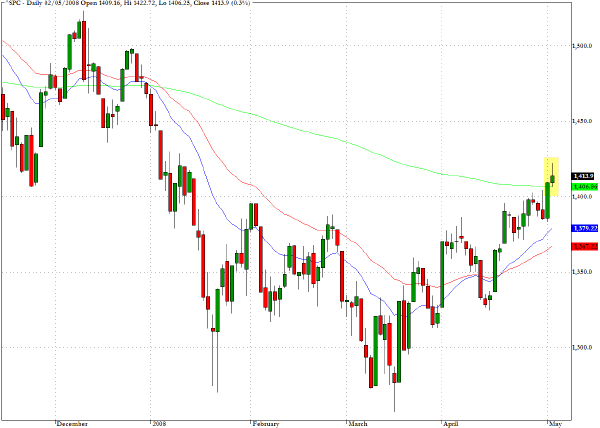
The Russell 2000 (^RUT) faces a very clear hurdle at the 740 level. While several broad indices including the Nasdaq 100, S&P 500 and S&P 400 Midcap (^MID) have managed multiple closes above their respective 200 day moving averages, neither the broad Nasdaq Composite (^IXIC) nor the small cap Russell 2000 have been able to pierce this barrier since the January sell-off.
Reviewing the chart below it can be seen that the smallcap index bounced back to 730 after the January plunge and has recently come back to a similar level as part of the overall recovery of equities. While this index stalls below 740, and while the Nasdaq Composite remains below 2460, the bullish case for equities will have to contend with the cautionary comment that until we see greater breadth and participation a return to more bearish market dynamics is still a distinct possibility.
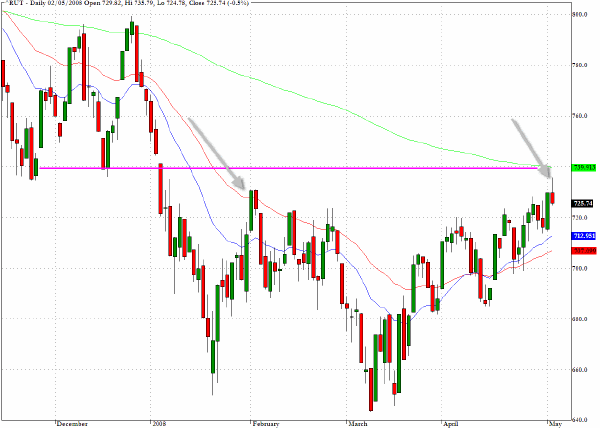
Yields on the ten year Treasury note have moved within a well defined and relatively narrow range of fifty basis points since mid January. As we come to the top of the range in yields it will underline the dilemma that asset allocators now face in gauging the nature and length of the economic downturn and whether the mid March watershed events should require a growing allocation of capital to equities and less to long term Treasuries.
It is hard to avoid the conclusion that the more appeal there is for stocks, and the more conviction there is that the recession will be short and shallow, the more likely it is that we will be seeing 4% yields again for the 10 year note.
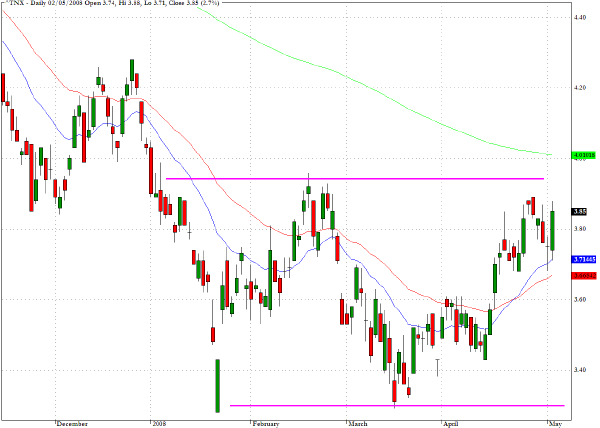
Motorola (MOT) is in a constricted range and the mini flag formation after the extended basing pattern is pointing to an inflection point, where risk/reward favors the long side.
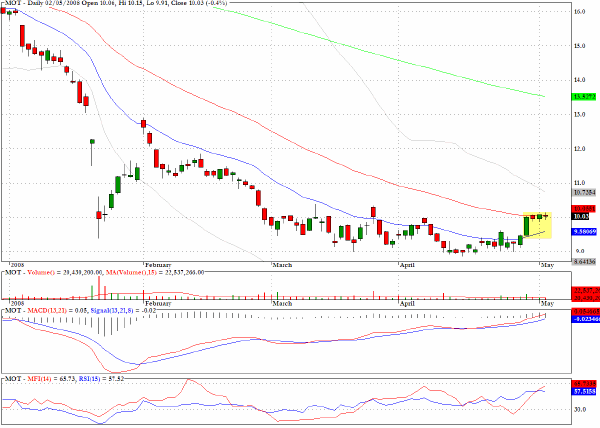
Zimmer Holdings (ZMH) pulled back from a recent spike downwards and, as the erratic price behavior suggests, there has been considerable difficulty in moving back above the resistance from all three moving averages.
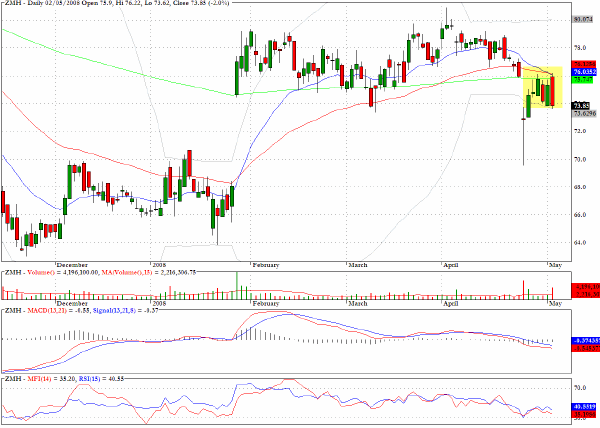
After a severe plunge in late March Jabil Circuit (JBL) has moved upwards in an extended pullback pattern but now faces hurdles at the pre gap down level as well as resistance from the 50-day EMA.
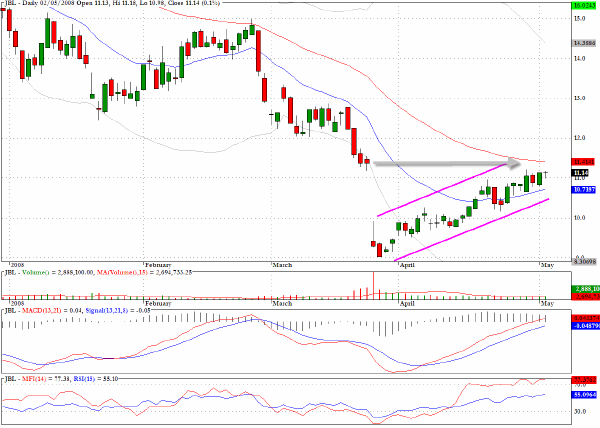
Clive Corcoran is the publisher of TradeWithForm.com, which provides daily analysis and commentary on the US stock market. He specializes in market neutral investing and and is currently working on a book about the benefits of trading with long/short strategies, which is scheduled for publication later this year.
Disclaimer
The purpose of this article is to offer you the chance to review the trading methodology, risk reduction strategies and portfolio construction techniques described at tradewithform.com. There is no guarantee that the trading strategies advocated will be profitable. Moreover, there is a risk that following these strategies will lead to loss of capital. Past results are no guarantee of future results. Trading stocks and CFD's can yield large rewards, but also has large potential risks. Trading with leverage can be especially risky. You should be fully aware of the risks of trading in the capital markets. You are strongly advised not to trade with capital.
|